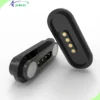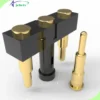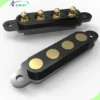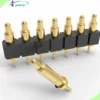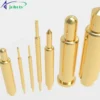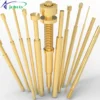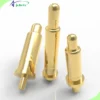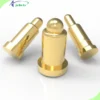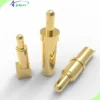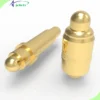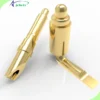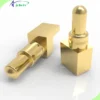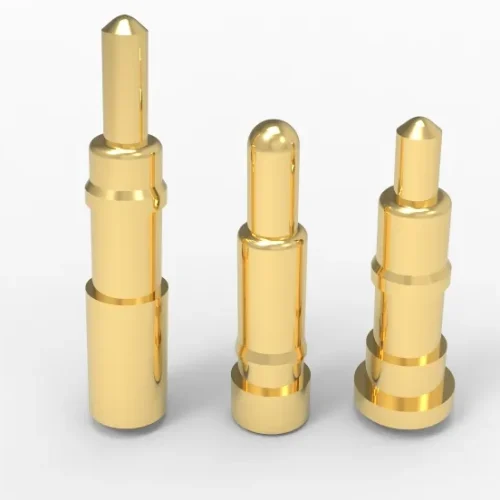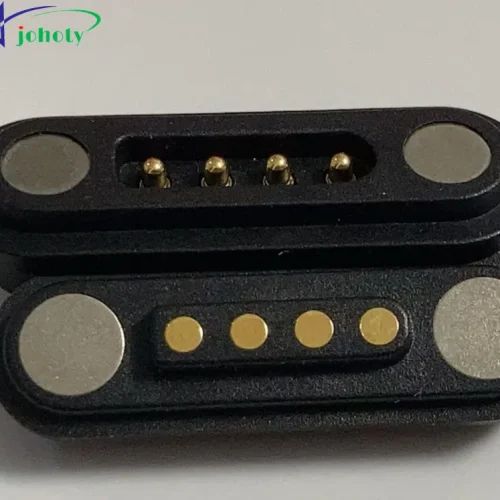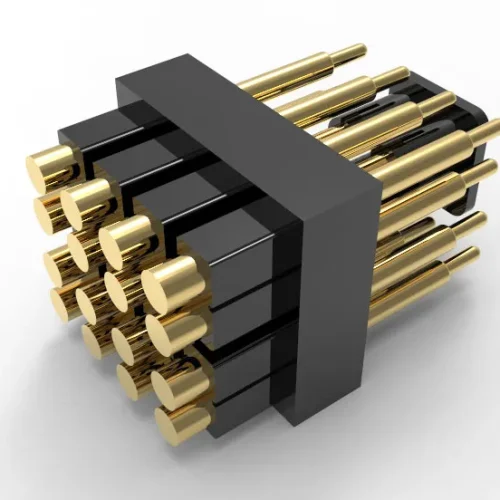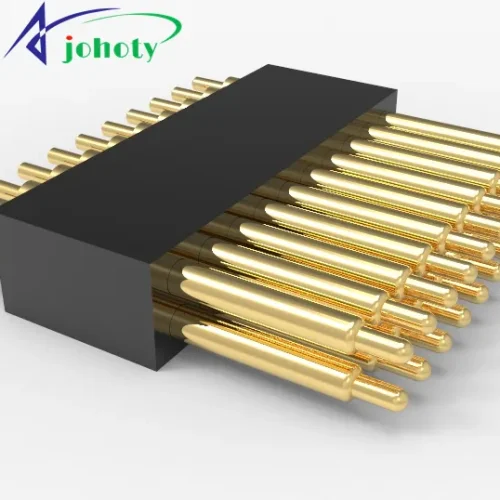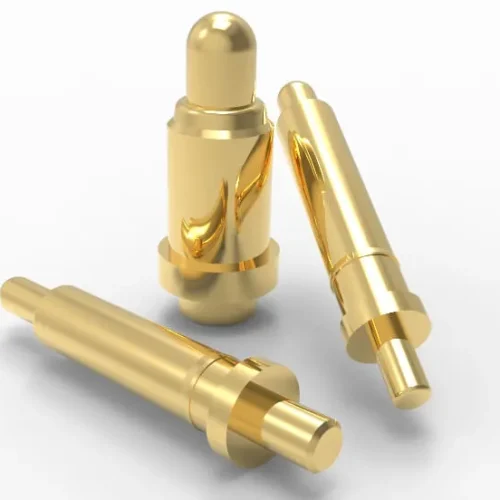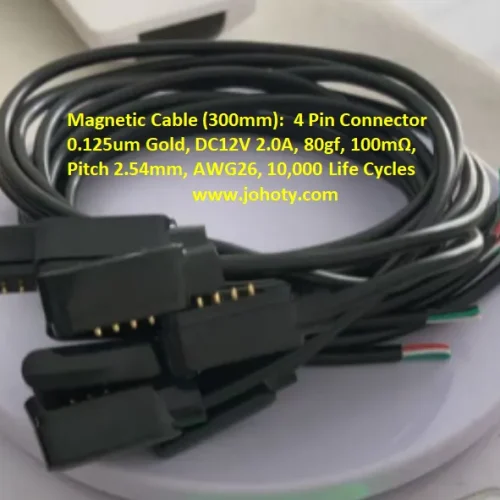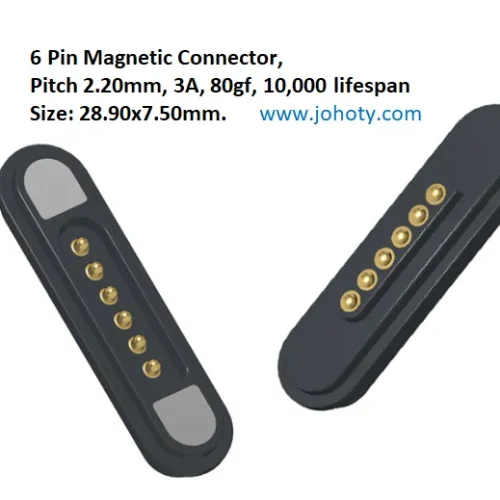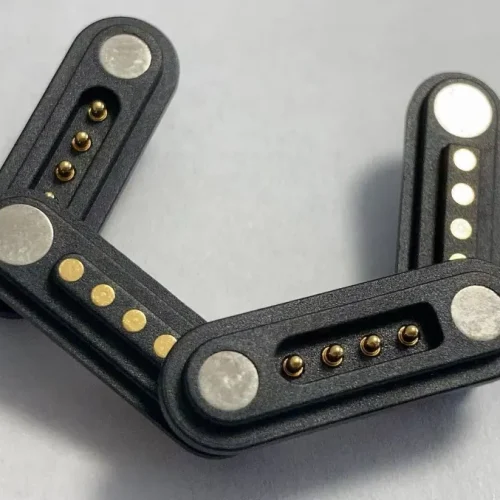Discover the Future of Micro Connectors, Offer Superior Solutions. Meet the Innovative Needs of Engineers and You! Know It, Enjoy it Now!
Micro connectors are small, compact connectors, typically for connections between electronic devices and circuit boards. Their compact design and small size allow for efficient electrical connections in limited spaces. Micro connectors commonly apply to a variety of applications, Such as consumer electronics, medical devices, mobile devices, communication equipment, aerospace, and automotive industries.
What are micro connectors?
As a precision electronic component, they utilize highly efficient metal contacts or pogo pins, housing. And fine engineering to provide a stable, reliable electrical connection between electronic devices.
1. Basic function
Create an electrical connection between electronic devices. They allow current and data to be transferred safely and efficiently between devices.
2. Physical contact
Micro connectors consist of two parts: A plug (male) and a socket (female). When the plug is inserted into the socket, their metal contacts (pogo pins and solid pins) come into contact. Which forms an electrical path.
3. Metal contact
Usually made of a metal with good electrical conductivity. Such as gold, silver or copper, to ensure a good electrical connection and minimal signal loss.
4. Insulators
The contacts of pogo pins are surrounded by housing, which is usually PA9T, PA46, etc. The insulator protects the contacts from the elements and prevents short circuits.
5. Data or power transmission
Transmit digital signals from one device to another. These signals can be audio, video, or other types of data. Also transmits power to provide the necessary power to the device.
6. Miniaturization techniques
A key technology is their small size. We can achieve it through precision engineering, ensuring that load multiple contacts even in very small spaces.
7. High-density design
We often design a high density, which means more contacts in a limited space. And enables the integration of more functionality into a smaller space.
8. Durability and reliability
We designed them to be very small in size and very rugged. They need to withstand frequent plugging and unplugging and a variety of working environments. Such as temperature changes, EMI, or mechanical vibrations.
9. Shielding and anti-interference
To minimize EMI, our high-quality micro connectors always include shielding. Such as a metal housing, or magnetic ring, it is to protect the signal from external noise.
Technical data and performance data of micro connectors
Depending on the actual applications of the micro connector, we can differently optimize these parameters below. For example, for portable devices, size and weight are major considerations. Whereas for industrial applications, electrical performance and durability are more important.
1. Electrical
Rated current. ≤800A, depending on size, raw material, design quality, manufacturing quality, etc.
Rated voltage. 3V~12V is for Low-voltage circuits in electronic equipment. 12V~100V is for automotive electronics and medical devices. >100V is for power transmission or high-voltage electronics.
Contact resistance. vary over different frequency ranges, <75Ω is better, we can provide 0.2mΩ or lower. Raw material and manufacturing quality can significantly affect it, HBi59, Au, Ag, BeCu, and TeCu are better. Specifications and requirements that must be complied with. Different types have different contact impedances.
2. Mechanical
Insertion and removal Life cycles. We can provide good design and manufacturing quality, the best raw materials. Working environments of temperature, humidity, chemical, and dustproof, waterproof or high temperature resistant? Proper plugging and unplugging practices are required. Excessive roughness or incorrect plugging and unplugging can damage the micro connectors. Frequent plugging and unplugging operations can shorten the life cycles of micro connectors.
Insertion and extraction force. Force or resistance is required during insertion and withdrawal operations. Directly affects connector experience and reliability. It depends on the connector design, manufacturing quality, material connector type, etc.
3. Physical dimensions
Male and female micro connectors. Or plug and socket. Their dimensions are very small, usually measured in millimeters or micrometers. Their pitch is ≥1.00mm, and the lowest pitch is 0.25mm.
Board-to-board micro connectors. Or B2B, Connect two circuit boards, for example in cell phones, tablets, and other portable electronic devices. Often described in terms of pin pitch, housing size, and height, etc.
Wire-to-board micro connectors. Or W2B. Connect wires to a circuit board. Their description is the same as B2B.
Wire-to-wire micro connectors. Or W2W. Connect two wires and are typically for low voltage and low current applications. Describe them in terms of wire gauge and connector type.
4. Environmental tolerance
Temperature range. -40℃~+85℃ are for electronics, communications, industrial controls, and consumer electronics. +125℃ is for automotive engine rooms, aerospace, and industrial heat treatment equipment. -65℃ is for polar science, space probes, and cryogenic experiments. We usually come to specific definitions of temperature ranges and performance requirements for marine environments, high-temperature and high-pressure under oil wells, nuclear power plants, and so on.
Humidity range. 20%RH ~ 80%RH is standard range. Our micro connectors are in the range of 20%RH ~ 90%RH. Also, IP68 or IP69k is available if needed.
Vibrations and shocks. Express them in units of gravitational acceleration G. The performance of micro connectors varies depending on the direction and frequency range of vibrations and shocks.
Chemical Exposure.
In liquids, gases, solvents, oils, and corrosive substances. we always select the best quality raw materials, sealing methods, and other design methods. The target is to maintain the performance, functionality, and reliability of the micro connectors.
Dust and water resistance. We usually use a good design and manufacturing quality with special sealing materials, such as rubber, silicone, or other glue. Which is to realize the dustproof and waterproof of IP65, IP66, IP67, IP68, etc.
Anti-radiation. We often use radioactive materials such as tungsten, germanium, silicon, or lead to absorb or shield radiation. Conduct shielded designs, EMC tests, and radiation tolerance tests, as well as upgraded sealing performance.
Marine environment. In addition to the environmental requirements above. Micro connectors can maintain stable operation in subsea environments with high pressure, high humidity, high salt, and low temperatures. We often use special seals and materials for our designs.
5. Signal integrity
Transmission rate. For micro connector + USB, USB2.0 is 480Mbps, USB3.0 is 5Gbps, USB3.2 is 10Gbps, USB3.2 is 20Gbps. About micro connector + HDMI, HDMI 1.4 is 10.2Gbps, and HDMI 2.0 is 18Gbps. For micro connector + optical fiber, it is for 1Gbps, 10Gbps, 40Gbps, and 100Gbps, etc.
Signal losses. Signal attenuation is caused by the design, materials, signal itself, plug and unplug frequency, and characteristics of the micro connector itself. As well as the transmission process of the connecting wire or cable. Signal loss is usually expressed in decibels (dB), indicating the degree of signal attenuation.
Anti-interference. Make sure good signal quality, signal reliability, crosstalk resistance, anti-interference design, and electromagnetic compatibility.
6. Raw materials and manufacturing quality
Raw materials. Housings. Stainless steel, aluminum alloys, engineering plastics, nylon, polyimide, or other alloy materials.
Pogo Pins or contacts: brass, beryllium copper, phosphorus copper, gold, silver, tellurium copper, SUS304, 316, etc.
Insulation materials: PA9T, PA46, etc.
Manufacturing quality. Process: Ensures dimensional accuracy, fine machining of internal components, and reliability.
Inspection and test: Ensure performance in the specification, including electrical, mechanical, connectivity, and environmental testing.
Quality control: Supervise manufacturing processes with ISO9001, TQM, TPM, and Six Sigma.
7. Compatibility and standards
Compatible sizes, shapes, and plug-in styles. Can assemble with USB, HDMI, Rj45, and is compliant with the procedures of contact resistance, rated voltage, and rated current. Obey various procedures of signaling protocols and integrity. Compliant with the temperature range, dustproof, and waterproof. Complaint with international and industry standards, and certificates.
Client’s Requirements and Solutions
1. Miniaturization and high-density connectivity
Many customers often need micro connectors because they want to connect more electronic components in a limited space.
We always develop small, high-density micro connectors to meet customer needs for compact electronic designs.
2. High performance and stability
Customers need connectors with stable performance under various working environments. Including high temperature, low temperature, vibration, etc.
Design micro connectors with high performance and stability. Ensure their reliability with high-quality raw materials and processes.
3. A variety of connection options
Variety of connection options: DIP, SMT, thread screw, right angle, solder cup, etc. meet different applications.
Provide diversified connection options to meet different customer needs.
4. Durability and long life cycles
Ask us to provide long-term durability and service life, reducing the frequency of maintenance and replacement.
Sure, we provide highly durable materials, precision manufacturing, and quality control, Ensuring long-term reliability.
5. Customization and Flexibility
Customize micro connectors to meet specific applications.
We can offer customization to design and manufacture micro connectors to meet clients’ unique requirements.
6. Cost-effectiveness
Desire to obtain high-quality micro connectors at an affordable price.
Always provide our customers with competitive prices by optimizing manufacturing processes, material sourcing, and cost control.
7. EMI (electromagnetic compatibility)
In high-frequency or high-speed data transmission, minimizing EMI is an important consideration.
Design micro connectors with superior shielding to minimize the impact of EMI (electromagnetic interference) on device performance.
8. Eco-friendly materials
Ask to use Eco-friendly materials.
We always use Eco-friendly materials. Such as lead-free and halogen-free to minimize the impact on the environment. And, we always follow our client’s requirements.
Applications of micro connectors
Our clients are often concerned about the design, durability, and performance of micro connectors and how they fulfill the requirements of various applications. Their innovative developments, such as increased data transfer speeds, reduced dimensions, improved environmental resistance, etc. Are the focus of our ongoing research. They are also the concerns of most of our clients in terms of technological innovations and specific applications.
Consumer electronics. Enables data transmission and power supply in smartphones, tablets, laptops, TWS, and SOS bracelets. Assemble a cable with a USB adaptor, HIDMI adaptor, etc.
Automotive.
Connects multiple electronic systems within a vehicle, such as in-vehicle infotainment systems, navigation systems, and advanced driver assistance systems (ADAS). The demand for high-performance micro connectors is growing with the development of electric vehicles and autonomous driving technologies.
Aeronautics and astronautics. Connects the communication systems, navigation systems, and flight control systems of aircraft and spacecraft. Ensures reliable operation in extreme environments.
Medical equipment. Connects a variety of diagnostic equipment, surgical instruments, and implantable medical devices. Such as pacemakers, MRI machines, and portable diagnostic instruments.
Military applications.
Commonly used in communications equipment, weapons systems, radar, and surveillance systems. They can operate stably under extreme conditions. Such as high temperatures, high pressures, and strong magnetic fields.
Space exploration. Connects instruments inside the spacecraft to external sensors. Able to withstand extremely changed temperatures and radiation levels while remaining lightweight and reliable.
Deep-sea exploration. Connects submersibles and subsea equipment. High-pressure resistance and corrosion resistance, adapted to the high-pressure and salt-water environment of the deep sea.
Smart clothing. Connect small sensors and electronic devices woven into clothing. They are often very small and flexible to allow seamless integration into the fabric.
Biomedical research.
Connects to lab microfluidic chips and analyzers. Very precise and tiny to handle very small amounts of biological samples.
UAV (unmanned aerial vehicle). Connect flight control systems, cameras, and communication devices. They are very lightweight and vibration-resistant.
Smart Plant Monitoring. Connects sensors in the soil to plant growth monitoring systems. Usually, waterproof and chemically resistant for long-term use in outdoor environments.
Micro-satellites. Commonly used in communications equipment, radar and surveillance systems, and weapons systems. Can work stably in high pressure, high temperature, and strong magnetic fields.
Conclusions
In this blog, we’ve taken an in-depth look at the types, clients’ expectations, applications, and benefits of micro connectors. The world of micro connectors is full of endless possibilities. And they play a key role in many areas, from medical devices to consumer electronics to aerospace technology. As technology continues to evolve, micro connectors will continue to play an important role in innovation.
We look forward to having more shares with you and hearing your ideas and suggestions. If you have any questions, or comments, or are interested in further discussion in the field of micro connectors. Please don’t hesitate to tell us. We encourage you to share your experiences and insights with us so that together we can move the field forward.
In addition
If you have any special requirements for your micro connector needs or projects. You are also welcome to contact our professional CFT Team. And our CFT team will be happy to provide you with support and customized solutions.
Thank you for reading this blog and I look forward to continuing meaningful shares with you in the field of micro connectors!

